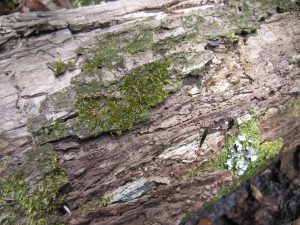Have you ever heard someone say that a dead tree supports more life than live wood? Well, it’s true! In fact, Jogeir N. Stokland, Juha Siitonen and Bengt Gunnar Jonsson wrote a whole book about it called “Biodiversity in Dead Wood”. My contributions typically focus on living trees and their value, but today I’m going to shift gears to talk about the living dead 😉
What’s a dead tree to you? Could be a hassle and a costly one at that, but a dead tree to a living creature is often full of opportunities. If you have a dead tree in your yard, there are other options than cutting the whole thing down (unless you live in a strict HOA).
Option 1
Leave the tree standing as a snag

If you have a dead or dying tree in your yard and it doesn’t pose a threat to any structures, you can consider leaving the main trunk as a snag. A snag, even as short as 15 feet can be a great resource for wildlife. Snags provide opportunities for the 20+ species of birds classified as cavity nesters and several mammals too. Some cavity nesters you might be familiar with are: woodpeckers, owls, bluebirds, chickadees, and wrens. Mammals that might take advantage of a snag include bats, squirrels, raccoons, and opossums.
It’s important to note that while there are many cavity-nesting species, only a handful can excavate the cavity themselves. We call these species “primary cavity excavators”. These include woodpeckers, chickadees and nuthatches. Species that take advantage of excavated cavities are called “secondary cavity users”.
I know this article is about dead trees, but many species of trees can form cavities while still alive. This is often the case with many hardwood species such as oaks, maples and elms. Conifers like pines and cypress tend to be utilized for cavities once they are dead. Regardless of tree species, once a tree is dead, it has great opportunity be a source of life.
Option 2
Cut the tree down, but leave the wood there

We call this dead wood, but as mentioned earlier, dead wood is full of life! Not only do the logs create a wonderful source of shelter for wildlife big and small, but they become a great source of food too. It’s a neat way to see the food chain in action. Small species take advantage of the decaying wood first, things like fungi, beetles, termites, ants, and grubs. As these species feast on the wood, larger species such as snakes, birds, and mice take advantage of the log buffet.
The more diversity of dead wood you provide, the more diversity of species you will attract. If you have different species of snags and/or logs and different sizes, you will attract a larger variety of species to your yard.
So, the next time you see a dead tree, don’t be sad, be glad for all the food, cover and shelter it’s providing for area wildlife.
Want to learn more about ways to attract wildlife to your yard, check out my “Wildlife Wanted” blog, or if you’re more of a visual learner, check out my “Backyard Nature Network” video series.
Sources: Dead Wood: Key to Enhancing Wildlife Diversity in Forests http://edis.ifas.ufl.edu/uw277 Helping Cavity-Nesters in Florida https://edis.ifas.ufl.edu/uw058
 0
0
